The Creality Ender-5 S1 3D Printer is a significant upgrade to the classic Ender 5 series, focusing on high-speed printing and enhanced stability through its cube-frame Cartesian structure. Key features include the “Sprite” Direct Extruder (300°C), 250mm/s max print speed, and CR Touch Auto-Leveling. It delivers excellent print quality and is versatile with various filaments.
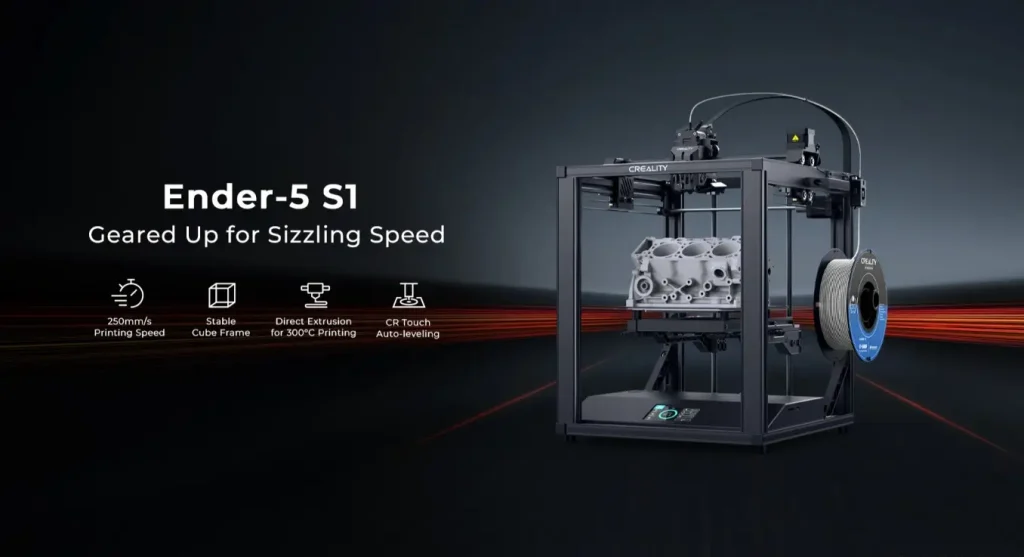
Cube-Frame Contender
Since its release, the Creality Ender-5 S1 has carved out a unique space in the crowded FDM 3D printer market. As an evolution of the classic Ender-5 series, it brings a fresh suite of modern features to a tried-and-true, cube-frame design. But in an era dominated by high-speed CoreXY machines, does this Cartesian cube still stand up?
The Ender-5 S1 is designed for users seeking improved speed and stability over traditional “bed slinger” printers (like the Ender-3 series) without the complexity or price tag of a full-fledged CoreXY system. With a direct-drive extruder, high-temp hotend, and a reinforced frame, the S1 aims to be a versatile workhorse for hobbyists and professionals alike.
Core Feature

Speedy to Realize Creative Ideas
Upgraded motion system for 2000mm/s² acceleration and up to 250mm/s (5 times) printing speed*. Feel the speed and passion of 3D printing now.
Each X/Y/Z axis is driven by a high-precision stepper motor. A steel transmission shaft syncs the two Y-axis belts.
High-torque Y-axis 42-48 motor for responsive and precise motion.

Design and Core Mechanics: Stability is Key
The most defining feature of the Ender-5 S1 is its cube-style frame. Unlike the Ender-3, where the print bed moves along the Y-axis (a “bed slinger”), the Ender-5 S1 features a gantry that moves the toolhead along the X and Y axes, while the build plate moves only on the Z-axis (up and down).
Advantages of the Cube Frame:
- Enhanced Stability: By keeping the large mass of the build plate’s movement confined to the vertical Z-axis, the frame experiences less shaking from rapid movements on the X and Y axes. This allows the Ender-5 S1 to achieve advertised print speeds of up to 250mm/s and high acceleration (∼2000mm/s2) with reduced risk of ghosting or artifacts compared to a bed slinger.
- Fixed Center of Gravity: The printer’s footprint doesn’t change during printing, making it easier to place and suitable for an optional enclosure—a crucial addition for printing high-temperature materials like ABS.
- Vertical Build Volume: The 220×220×280mm build volume is respectable, and the cube structure handles tall prints with excellent stability due to the reinforced dual Z-axis rods on the bed.
It is important to note that despite the boxed frame, the Ender-5 S1 is a Cartesian printer, not a CoreXY system. The X and Y axes operate independently with their own motors, which is simpler to build and maintain than a CoreXY, but typically less capable of extreme speeds.
Higher Efficiency and More Eco-friendly
It slashes printing time for all types of models. Higher efficiency and less power consumption.
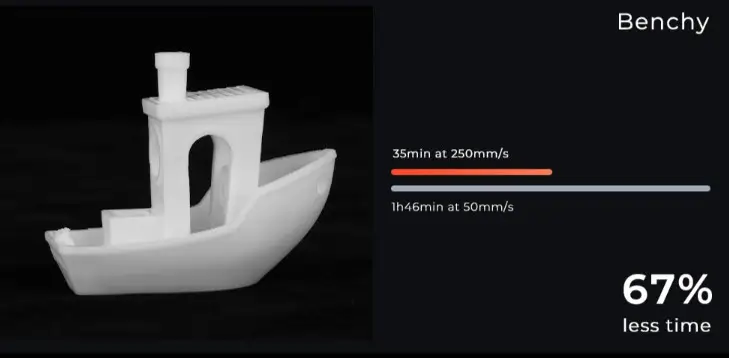
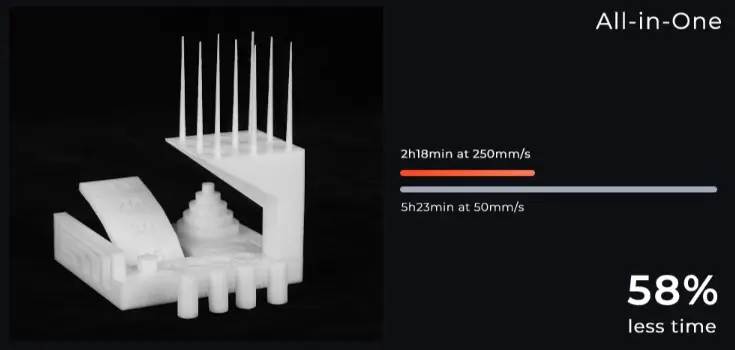
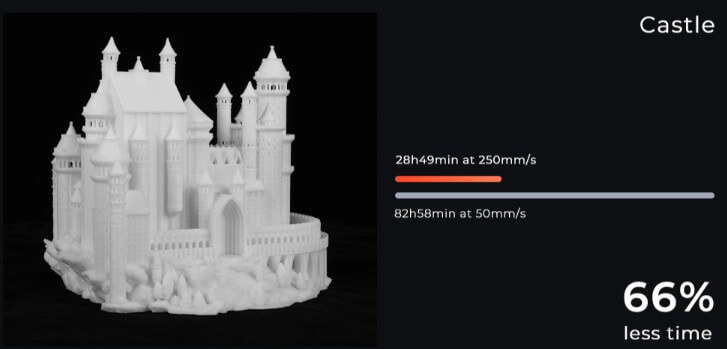
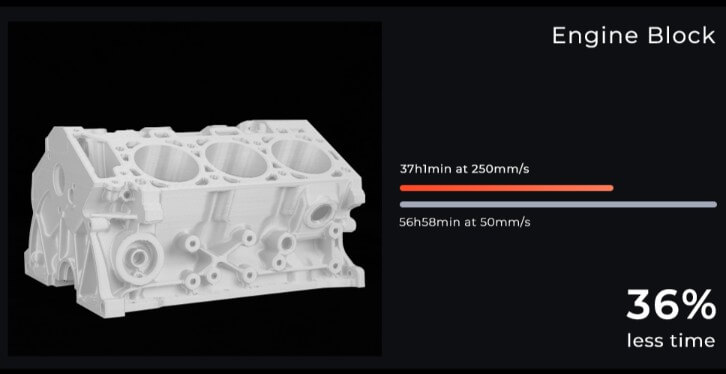
Hardware Upgrades: A Modernized Platform
The “S1” designation signals a major hardware overhaul, focusing on direct extrusion and high-temperature capability.
1. The “Sprite” Direct Drive Extruder
The Ender-5 S1 is equipped with Creality’s “Sprite” dual-gear direct drive extruder. This is a massive upgrade over the older Bowden-style extruders found on previous Ender-5 models:
- Better Filament Control: Mounted directly on the toolhead, the extruder provides superior control and reduced path distance, making it ideal for printing flexible filaments like TPU and achieving better overall retraction.
- All-Metal Hotend: The Sprite Pro hotend on the S1 can reach temperatures up to 300∘C. This opens up compatibility with advanced, high-temp filaments such as ABS, ASA, Nylon, and Polycarbonate (PC), materials that were virtually inaccessible to its predecessors without significant modification.
2. CR Touch Automatic Leveling
The printer includes Creality’s CR Touch auto-leveling probe. This inductive sensor creates a mesh of the print surface to compensate for minor inconsistencies, greatly improving first-layer adhesion and overall print reliability. While a manual Z-offset adjustment is still often required after initial setup, the CR Touch significantly simplifies the daily printing process.
3. PEI Spring Steel Build Plate
The shift to a PEI-coated spring steel magnetic build plate is another welcome quality-of-life improvement. PEI offers excellent adhesion when heated and allows for effortless print removal—flex the plate, and the finished part pops right off.
4. 4.3-inch Color Touchscreen
The old mechanical control screen and knob have been replaced with a full-color, responsive touchscreen, providing a significantly more intuitive user experience for managing leveling, filament loading, and print jobs.
Stand Firmly to Print Quality Models
An all-metal cube frame goes with the classic Cartesian structure.
The stability is enhanced by thick linear shafts, extra gussets, two cantilevers, and silicone bed mounts.
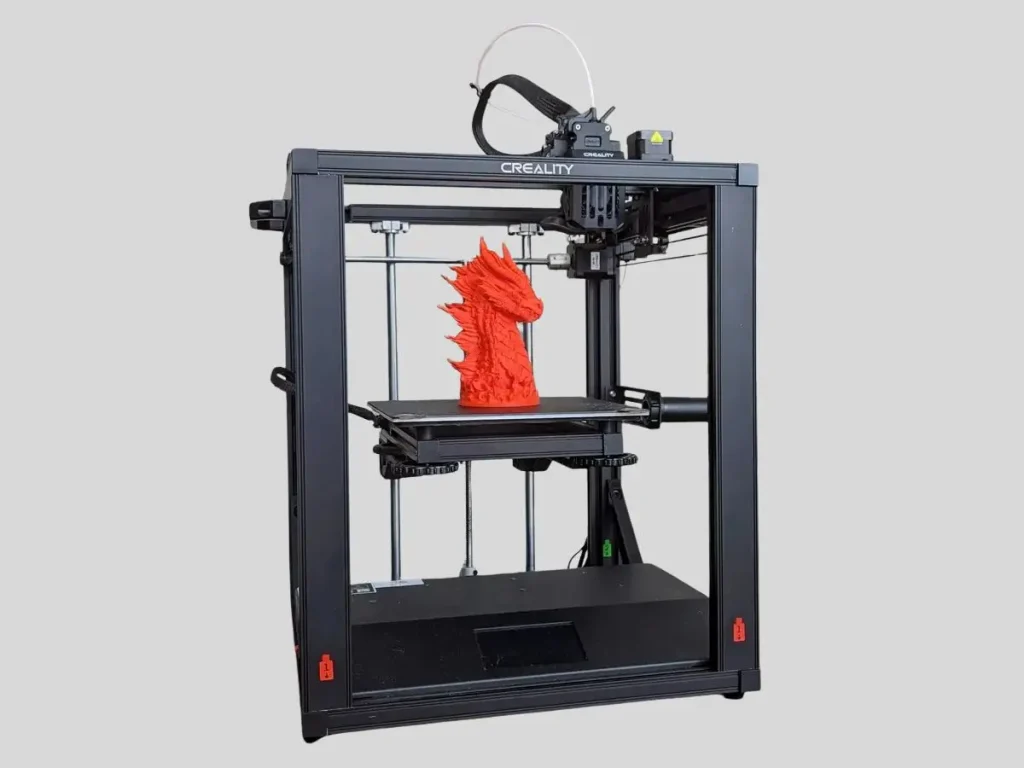
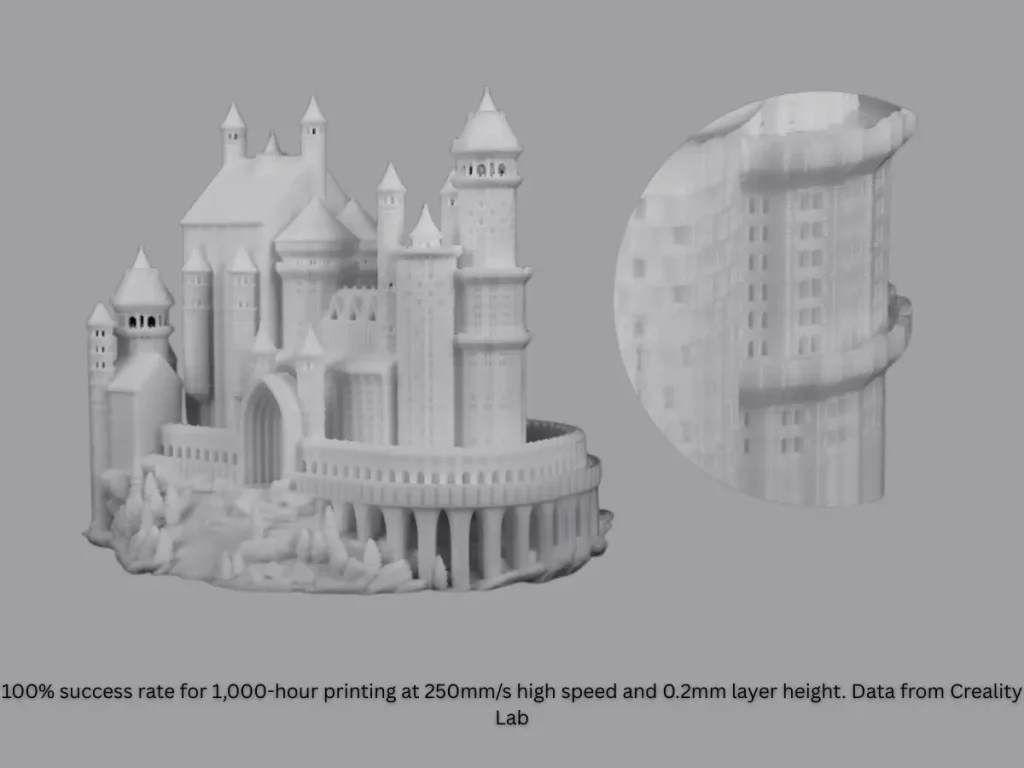
Print Performance and User Experience
In practical testing, the Ender-5 S1 delivers on its promise of high-quality prints right out of the box, especially when running at its recommended speeds (often around 120mm/s or less for optimal detail). The sturdy frame and efficient direct-drive system translate to clean walls, consistent extrusion, and minimal artifacts.
Speed vs. Quality
While the maximum speed of 250mm/s is impressive on paper, achieving it consistently without sacrificing quality requires meticulous tuning (often via the Creality Sonic Pad for Klipper firmware) and typically only occurs on parts with long, straight print paths. For most complex models, the printer’s quick acceleration and a more modest print speed of 80mm/s to 120mm/s provide a better balance.
Assembly and Setup
The Ender-5 S1 arrives partially assembled and typically requires about an hour for full assembly. Instructions are generally clear and accessible for newcomers to 3D printing, though it’s more involved than some fully pre-built competitors. The leveling process involves manually adjusting the four bed knobs, followed by the CR Touch auto-leveling routine.

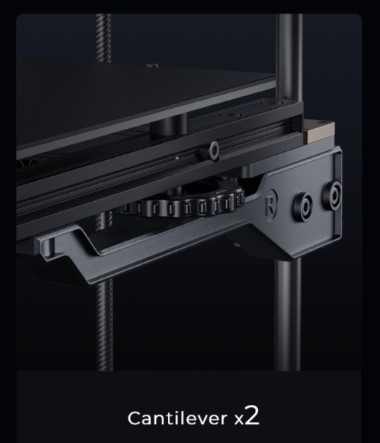

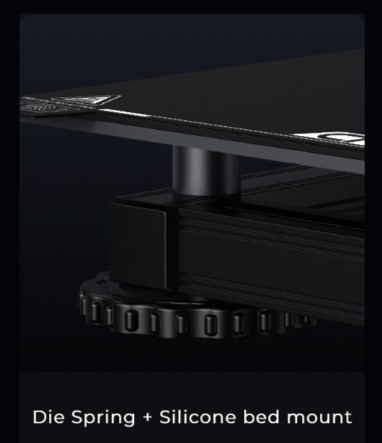
Potential Drawbacks and Considerations
While a powerful machine, the Ender-5 S1 is not without its caveats:
- Part Cooling: The stock part cooling fan is often cited as a weak link, potentially limiting the printer’s ability to maintain high speeds, especially for complex overhangs. This is a common point for community upgrades.
- No Enclosure Included: To safely and effectively print temperature-sensitive materials like ABS or ASA, an optional acrylic enclosure is strongly recommended to maintain a warm, stable build environment and prevent warping or delamination.
- Competition: In its price bracket, the Ender-5 S1 faces stiff competition from fully enclosed, high-speed CoreXY printers, such as the Bambu Lab P1P/P1S or Creality’s own K1 series. These alternatives often offer faster speeds and more advanced features out of the box.
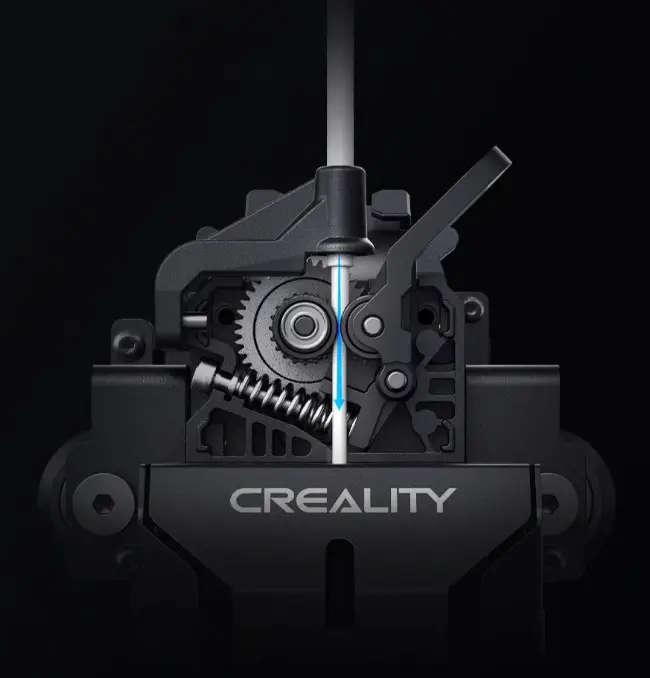
Direct Extrusion Adapted to Flexible Filaments
The all-metal “Sprite” direct extruder features dual gears of a 1:3.5 gear ratio. It delivers a powerful and uniform 80N extrusion force. Way better when printing with flexible filaments like TPU.
Hotend for High-temp Printing
Titanium Alloy Heatbreak: Low thermal conductivity for blocking heat creep. Able to tame up to 300℃.
Corrugated Heatsink: 2.5 times the surface area that is rapidly air-cooled by a silent axial flow fan.
Large Melting Chamber: 50mm³ melting chamber surrounded by a large 4000mm³ heater block. It fully melts the filament for smooth feeding.
1,000 hours of clog-free feeding*
*Data from Creality Lab
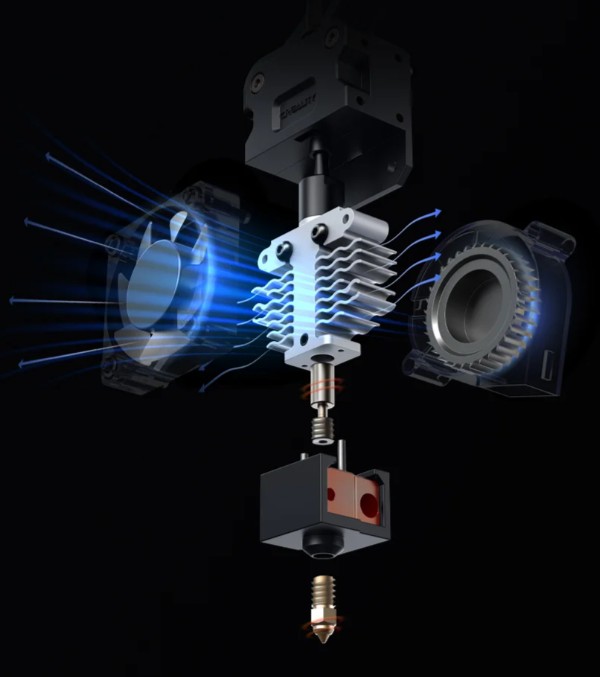
Get a Cool Model Promptly
The special “Urus” air ducts channel the strong wind generated by a large 5015 fan to cool the freshly printed section directly.
The deposited hot material will harden and bond up immediately, thus less drooping or warping caused by overheating.
It gives better overhangs, bridges, and more details overall.


Explore with High-temp Filaments
A whole new world opens, as a variety of heat-resistant engineering plastic filaments are brought into the game.
Regular Filaments: PLA, PETG, TPU. High-temp filaments*: ABS, PC, ASA, HIPS.

Quicker Expert-Level Calibration
Level the bed quickly by CR Touch auto-leveling and auxiliary leveling, or offset the Z-axis height at 0.01mm accuracy.
Get the perfect first layer with less hassle.
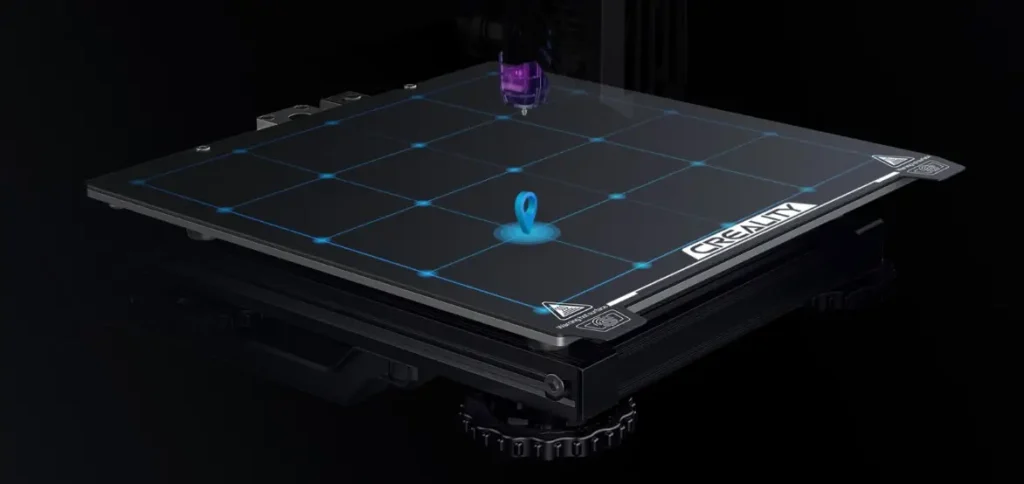
Straightforward Touch Screen UI
4.3-inch touch screen featuring a wide viewing angle, sensitive response, and a tabbed user interface.
A temperature PID control page is also added for easy adjustment.
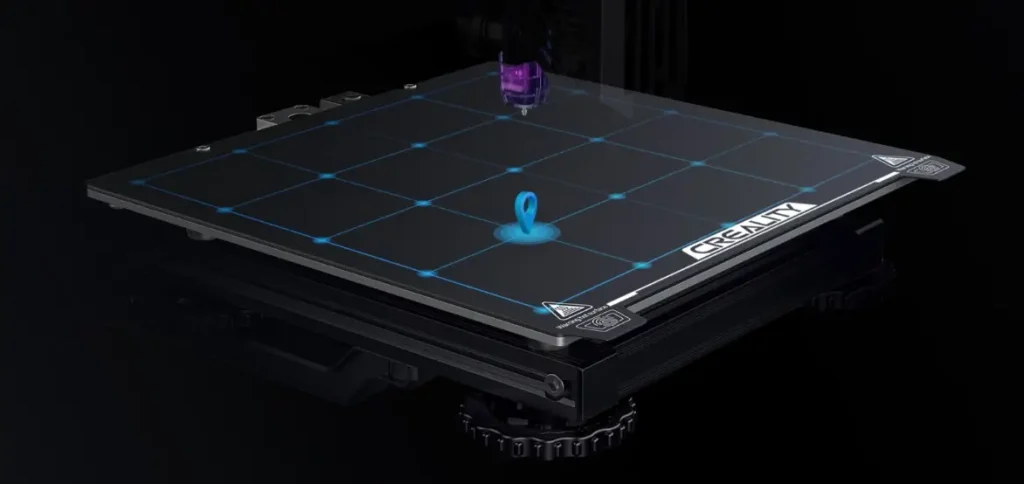
Creality Ender Print in Different Ways
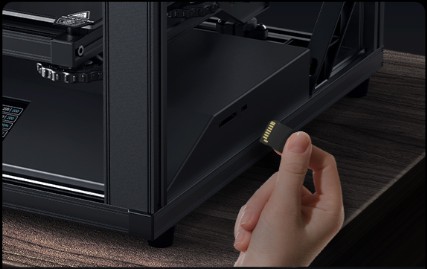
Insert a Memory Card and print directly.
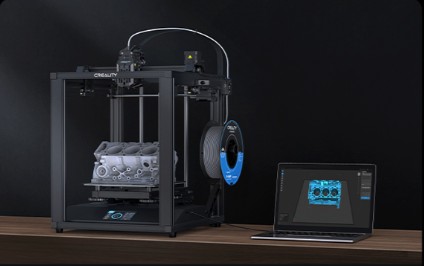
Connect to a PC via a USB-C cable.

Connect to Creality Cloud App via WiFi
Sticky and Bendable PC Build Surface
The PC spring steel sheet has two notches and a magnetic base for quick installation.
The frosted PC surface is sticky to models. And, the model can be removed right away with a slight bend.


Electrical Safety and Reliability
Secure aviation connector. Encased 350W power adapter.
And, no more loose wires and cables with the nylon wire harness sleeve. All for safety and tidiness.

Quality Designs for Better Experience
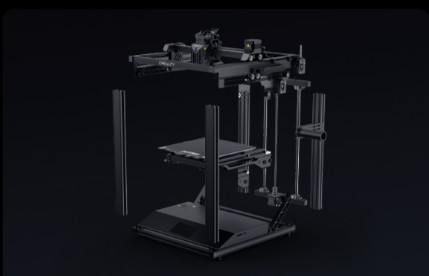
Quick assembly in 10 minutes
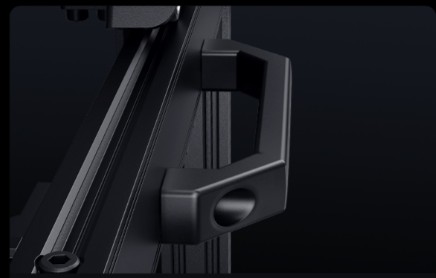
Easy to move around
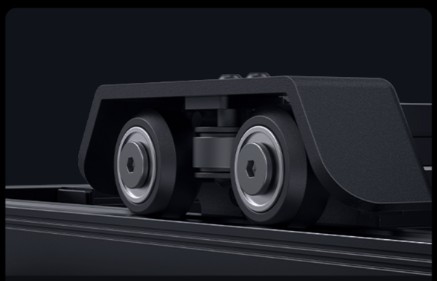
Preventing dust and foreign matters
Worthy Optional Accessories
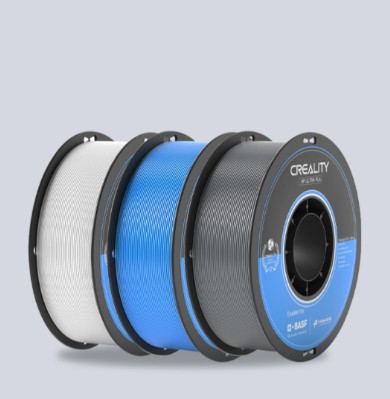
Quality filaments available including PLA and heat-resistant ABS.
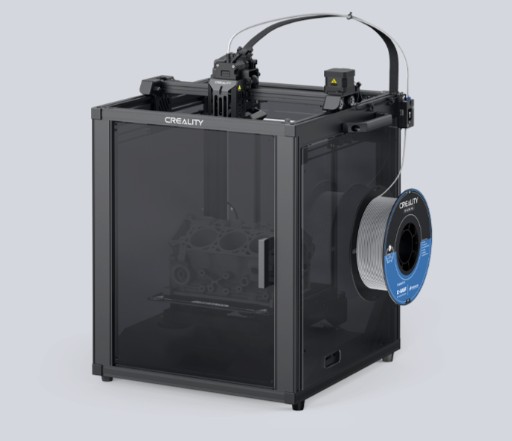
Forms a chamber to keep heat and prevent ambient airflow.

Enables remote monitoring and time-lapse filming & sharing when used together with Creality Cloud.

Klipper firmware on a powerful 64-bit platform with 2G RAM + 8G ROM and a 7″ touch screen.
Services and Supports

Specifications
| Printing Technology Fused deposition modeling | Printing Accuracy ±0.1mm |
| Build Volume 220×220×280mm | Layer Height 0.1−0.35mm |
| Product Dimensions 425×460×570mm | Filament Diameter 1.75mm |
| Package Dimensions 528×474×340mm | Nozzle Temperature ≤300∘C |
| Net Weight 12.1kg | Heatbed Temperature ≤110∘C |
| Gross Weight 14.7kg | Build Surface PC spring steel sheet |
| Extruder Type “Sprite” dual-gear direct drive extruder | Power Loss Recovery Yes |
| Extruder Material All metal | Filament Runout Sensor Yes |
| Leveling Mode CR Touch auto-leveling | Rated Voltage 100−120V∼,200−240V∼,50/60Hz |
| Mainboard 32-bit silent mainboard | Rated Power 350W |
| Display Screen 4.3 inch color touch screen | File Transfer Memory Card, USB Type-C cable |
| Printing Speed ≤250mm/s | File Formats STL, OBJ, AMF |
| Typical Printing Speed ≤120mm/s | Supported Filaments PLA, PETG, ABS, TPU, PC, ASA, HIPS |
| Acceleration 2000mm/s2 | Slicing Software Creality Slicer, Creality Print, Cura, Repetier-Host, Simplify3D |
| Nozzle Type Brass nozzle x1 | UI Languages English, Spanish, German, French, Russian, Portuguese, Italian, Turkish, Chinese |
| Nozzle DiameterStandard 0.4mm |
FAQs
Is the Creality Ender-5 S1 a CoreXY printer?
No. The Ender-5 S1 uses an advanced Cartesian system in a cube-frame design. While it shares the stability benefit of the bed moving only on the Z-axis (like most CoreXY machines), the X and Y axes are driven independently by their own dedicated stepper motors, which is the defining characteristic of a Cartesian system.
How fast can it actually print with good quality?
The maximum speed is 250 mm/s, but many users find ≤120 mm/s provides the best balance of speed and print quality out of the box. Achieving higher speeds (∼250 mm/s) often requires fine-tuning or implementing Klipper firmware (e.g., with a Creality Sonic Pad).
Can it print ABS or other high-temperature filaments?
Yes. The all-metal hotend, with a maximum temperature of 300 °C, supports high-temperature filaments like ABS, PC, and ASA. For best results with these materials, an optional enclosure is recommended to manage warping and delamination caused by temperature fluctuations.
Does it have a silent mainboard?
Yes, it is equipped with a 32-bit silent mainboard, resulting in relatively quiet operation despite the high speeds.

Comments are closed.